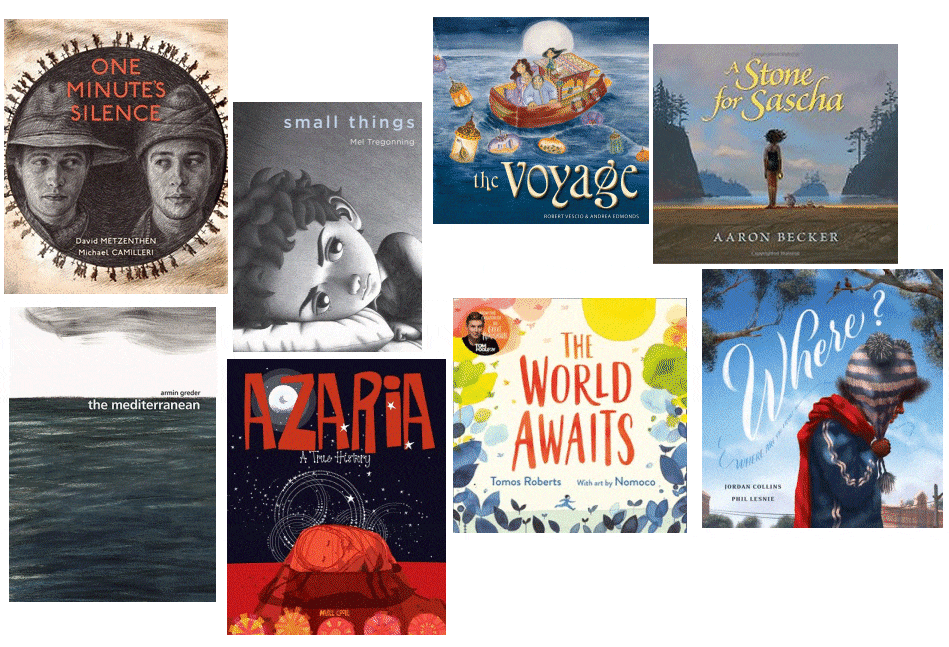
Picture Books for Older Readers
Picture Books for Older Readers
“A picture paints 1000 words.”
But what if there were pictures AND words?
And they were married together in a union so powerful that not only eyes were opened, but minds, too? Minds that are just beginning to understand that there is a larger world than family, friends and fantasy. Minds transitioning from what if to what is…
Over the last 40 years or so the role, format, content and impact of the picture book has evolved from being labelled in some libraries as “E for Easy” to being the medium for spreading an author’s message, beliefs and values and a new form of contemporary realistic fiction has emerged – one that introduces our tweenagers and young teens to real-life issues such as Mother Nature at her best and worst, the scourge of consumerism, the reality of war, the plight of refugees, the impact of racism, the anguish of depression and anxiety, even the concept of immortality.
Generations of teachers and teacher librarians have used picture books to put the curriculum in context, to draw those text-to-self and text-to-world connections, and vice versa. Students may hear the news that at least 80 refugees have died because their overloaded boat overturned on the Mediterranean as they desperately sought sanctuary, but its impact will be even greater if they have read or are introduced to Armin Greder’s book. Similarly, in a world full of plastic, slick marketing and planned obsolescence, they might reconsider their purchasing after reading The All New Must-Have Orange 430.
now the National Centre for Australian Children’s Literature has made the choice of the most appropriate story so much easier with the launch of its Picture Books for Older Readers database. Freely available to anyone with the link, the database (which currently has nearly 250 entries with more to come) can be searched by theme, topic, author, illustrator, publisher, even publication date so that just the right resource can be selected to support teaching and learning. As well as all the usual bibliographic information, each entry is annotated with the relevant Australian Curriculum codes; a list of subjects that it covers that goes beyond the English strand; a description of both the story and its potential for sharing with students; and links to appropriate teaching resources to enhance and enrich its use.
With the enormous popularity of graphic novels, we know our students respond to illustrated books that do not present as a wall of daunting text, particularly in a world dominated by screens, so the perception that picture books are for very young children who are not yet reading independently is, thankfully, disappearing and the power of the picture book to explore and explain difficult concepts, especially those that are not the common lived experience, is being acknowledged for what it is.
Even though this blog features reviews of books that are primarily for those from birth to about 8 years, every now and then I receive and review one for older readers that is so significant I have to share it. Therefore I have created a new category of Picture Books for Older Readers so these are more readily accessible, and I have set myself the task of cross-referencing my posts with the NCACL-PBOR database to ensure I have covered all bases.
The vision of the NCACL is “to be the home of Australia’s childhood stories” .
Australia’s literary past, present and future are preserved in the National Centre, through the stories that touched our hearts and stirred our imaginations as children. It documents and shares the creative process and inspires the next generation of readers with research collections, exhibitions and outreach activities.
This new database, as is and as it grows, is certainly helping to not only fulfil that vision but also ensure that the very best of our stories and storytellers are preserved for and shared with many generations to come.